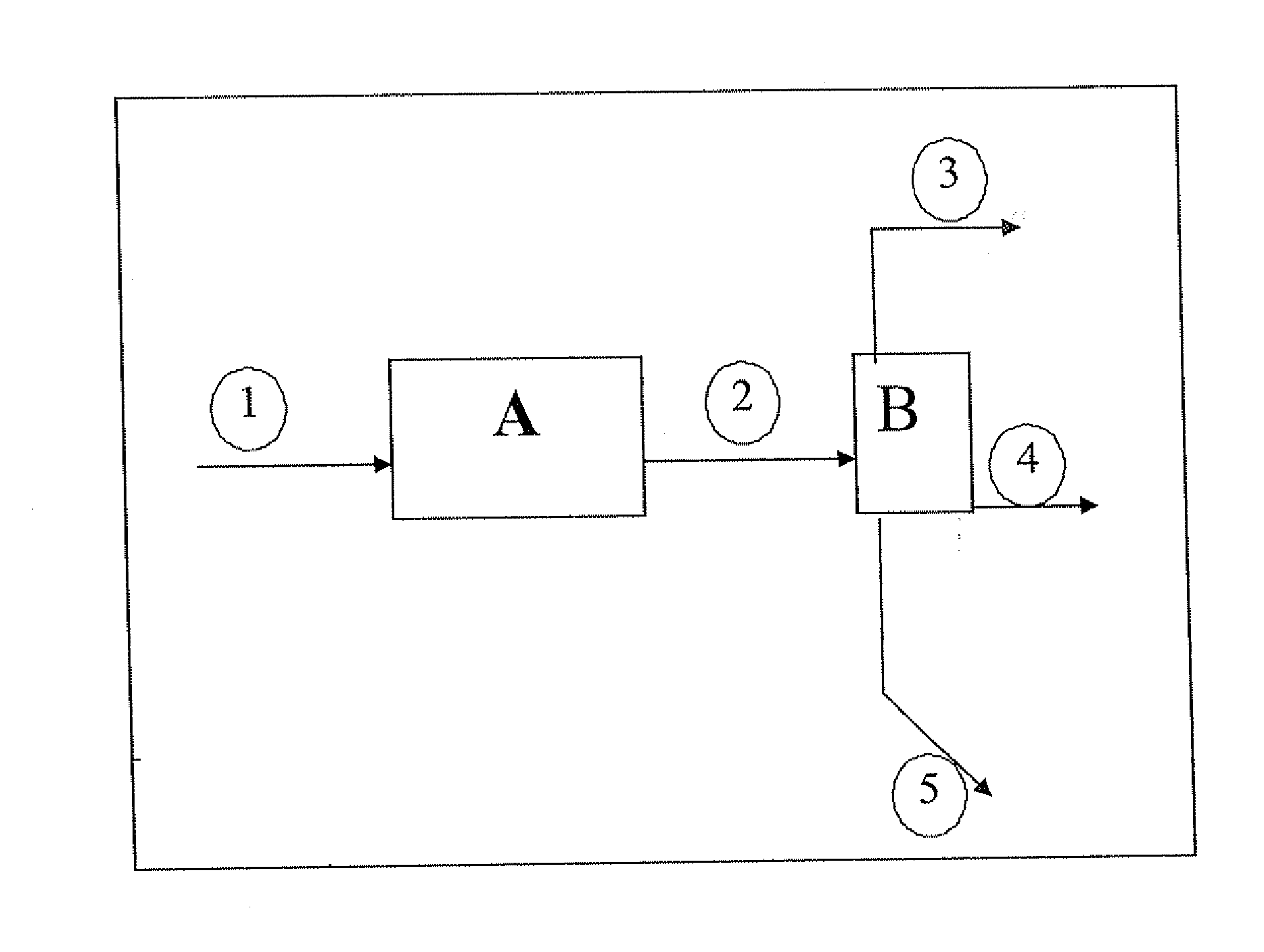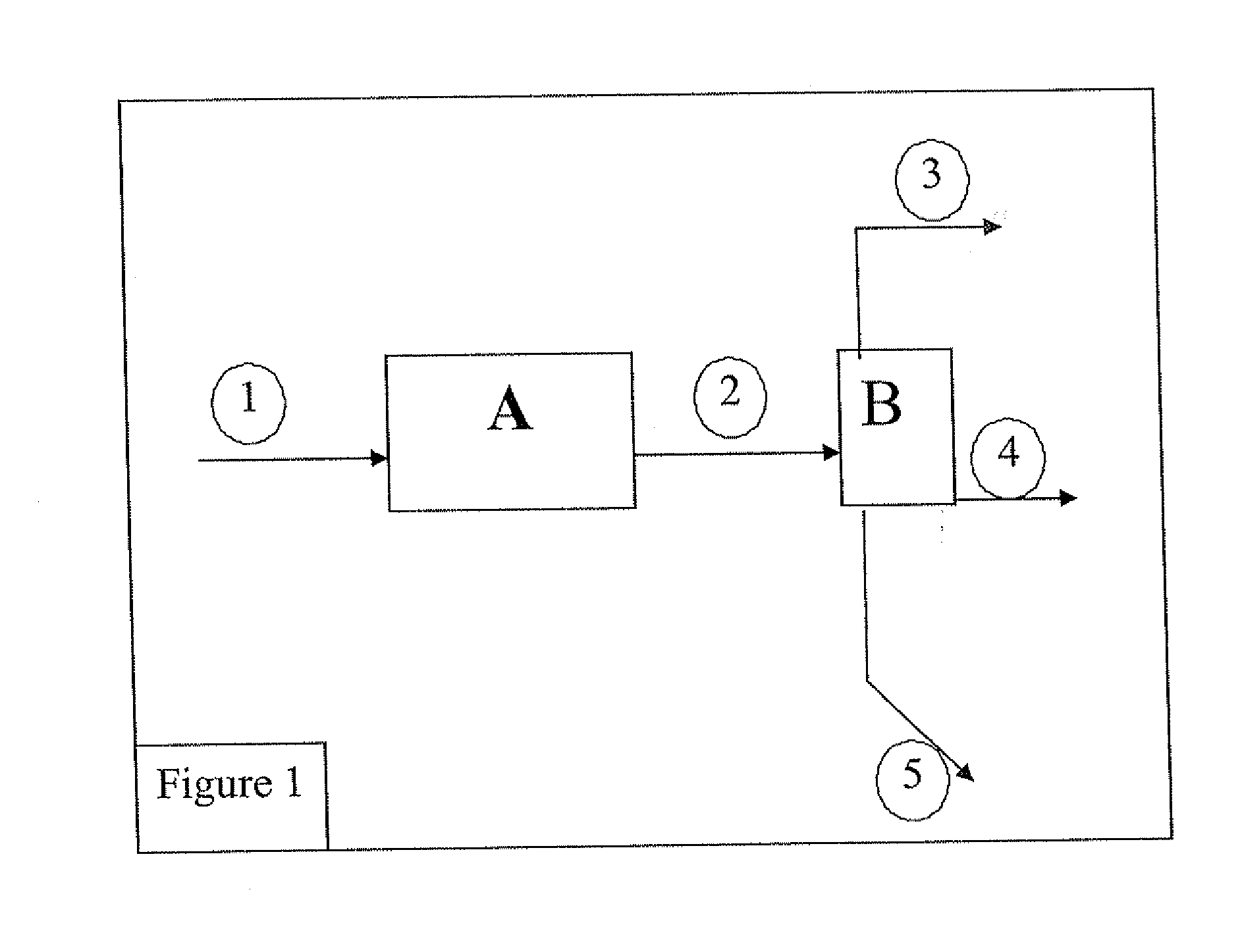Method of converting ethanol to base stock for diesel fuel
a technology of diesel fuel and conversion method, which is applied in the direction of hydrocarbon oil treatment products, physical/chemical process catalysts, organic chemistry, etc., can solve the problems of low yield, risk of catalyst dealumination, and no interest in gas oil optimization
- Summary
- Abstract
- Description
- Claims
- Application Information
AI Technical Summary
Benefits of technology
Problems solved by technology
Method used
Image
Examples
example 1 (
Comparison)
[0059] A pilot plant with a traversed bed is fed with a mixture of 50% by mass of alumina and 50% by mass of zeolite Y, in form of extrudates (the catalyst is designated by USY and it is considered to be microporous). 75 g catalyst are used.
[0060] Prior to the test proper, the solid is activated at 550° C. in an air stream for 2 h. This activation consists of a calcination aimed at combustion of the oil and grease traces, and at drying of the catalyst before using it.
[0061] 75 g / h ethanol are injected onto this catalyst, with a nitrogen dilution (inlet and outlet nitrogen taken away from the balance calculation) of 40 Nl / h. At the reactor outlet, the gas phase, the organic liquid phase and the aqueous liquid phase are separated. The test lasts for 50 h. No recycling is performed. The reaction conditions used are as follows: temperature 400° C., the reactor being isothermal and pressure 3 MPa.
[0062] Various balances are performed during the test. The mass balances prese...
example 2 (
According to the Invention)
[0067] A pilot plant with a traversed bed is fed with a commercial solid called IS463, marketed by the Axens company (formerly Procatalyse), also referred to as GOD200 (in-house designation). 75 g of gamma alumina type catalyst with an external surface of 200 m2 / g and pore volume of 0.59 cm3 / g are used. This catalyst is an acid catalyst, predominantly mesoporous.
[0068] Prior to the test proper, the solid is activated at 550° C. in an air stream for 2 h. This activation consists of a calcination aimed at combustion of the oil and grease traces, and at drying of the catalyst before using it.
[0069] 75 g / h ethanol are injected onto this catalyst, with a nitrogen dilution (inlet and outlet nitrogen taken away from the balance calculation) of 40 Nl / h. At the reactor outlet, the gas phase, the organic liquid phase and the aqueous liquid phase are separated. No recycling is performed. The reaction conditions used are as follows: temperature 400° C., the reactor ...
example 3 (
According to the Invention)
[0078] A simulation of the method involving a stage of recycling the separated gas phase was carried out.
[0079] As in the previous example, the catalyst used is the commercial solid IS463 (also bearing the in-house designation GOD200).
[0080] The ethanol feedstock is first flashed at 20° C. under 3 MPa, then heated to 400° C. The ethanol is dehydrated to ethylene up to a reaction progress rate of 97% and the oligomerization reaction is carried out with an ethylene conversion progress rate of 40% per pass.
[0081] The recycled C4+compounds are oligomerized or the ethylene present is added thereto, with a product distribution comparable to the reaction without recycling. After decrease of the temperature after the reaction down to a value ranging between 50° C. and 200° C., the reaction mixture is separated into three phases (aqueous, hydrocarbons and gas) at 3 MPa.
[0082] Table 4 hereafter gives the evolution of the gasoline and gas oil yields as a function...
PUM
 Login to View More
Login to View More Abstract
Description
Claims
Application Information
 Login to View More
Login to View More - R&D
- Intellectual Property
- Life Sciences
- Materials
- Tech Scout
- Unparalleled Data Quality
- Higher Quality Content
- 60% Fewer Hallucinations
Browse by: Latest US Patents, China's latest patents, Technical Efficacy Thesaurus, Application Domain, Technology Topic, Popular Technical Reports.
© 2025 PatSnap. All rights reserved.Legal|Privacy policy|Modern Slavery Act Transparency Statement|Sitemap|About US| Contact US: help@patsnap.com



